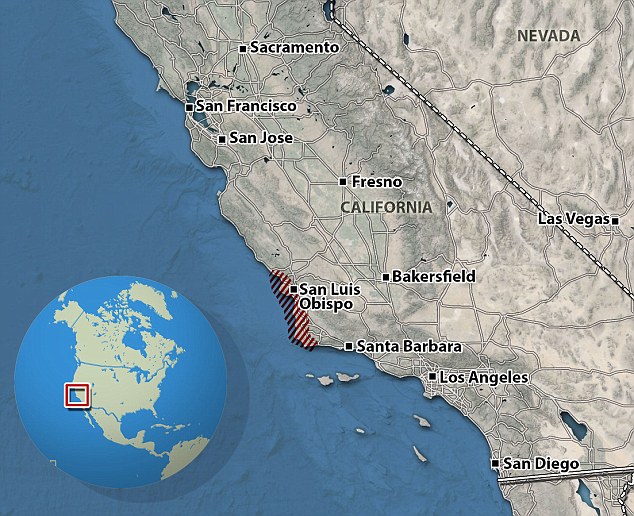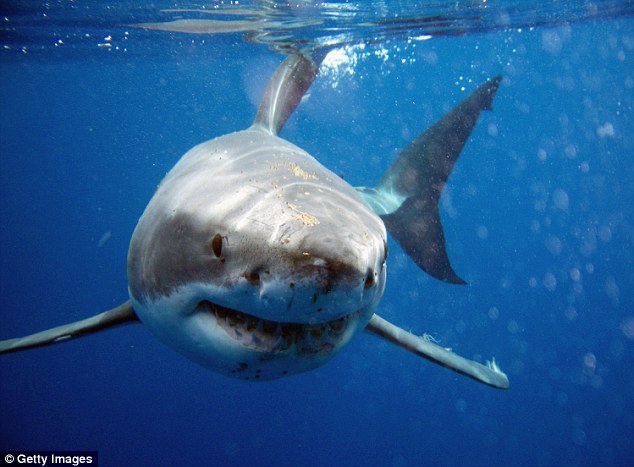
The development is a puzzle because sharks do not usually eat the small furry mammals, preferring the much fattier flesh of seals.
Biologists say more than 50 per cent of dead otters that wash up on California's coastline bear the marks of great white shark bites.
The trend is concerning conservation groups as California's sea otters are endangered.
It is thought that the sharks are not even eating the otters, but just biting them, with the otters dying from the wounds inflicted by the fearsome predator.
The reasons why are not clear, but experts suggest they may be 'exploratory bites' as the shark tries to work out what the creature is.
When dead sea otters are washed up, some of the bodies are sent to the State of California's Marine Wildlife Veterinary Care and Research Center in order to establish the cause of death.
Records of dead sea otters are also held by United States Geological Survey (USGS).
These records of otter deaths go back 29 years, offering researchers a rich trove of data to help them protect the endangered animals.
In a paper published in the journal Marine Mammal Science, researchers wrote that the percentage of otter deaths from shark bites has risen from 19 per cent in 1990 to 61 per cent in 2013.
The deaths started rapidly rising in 2003 and the trend is showing no sign of relenting.

'The trend was most pronounced in the southern part of the range, from Estero Bay to Point Conception, where shark bite frequency has increased eightfold.
'The causes of these trends are unclear, but possible contributing factors include increased white shark abundance and/or changes in white shark behavior and distribution.'

Some say that legal protections designed to protect sharks have led to higher numbers of the predators in the area.
'Laws protecting white sharks may have led to their greater numbers in the northeast Pacific, although data on white shark abundance and trends are limited,' said USGS in a statement.
The paper's conclusions were based records of shark bites found on 1,870 otter carcasses collected since 1985.



Reader Comments
to our Newsletter